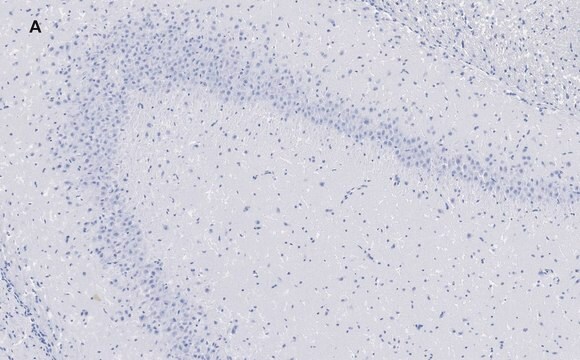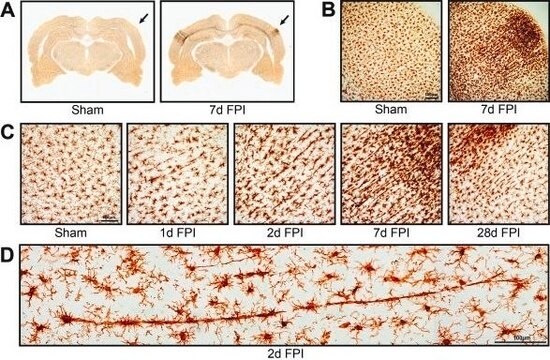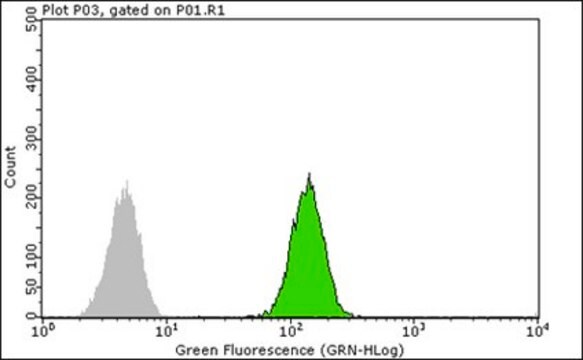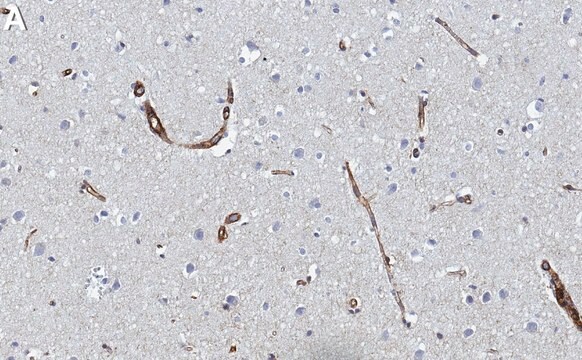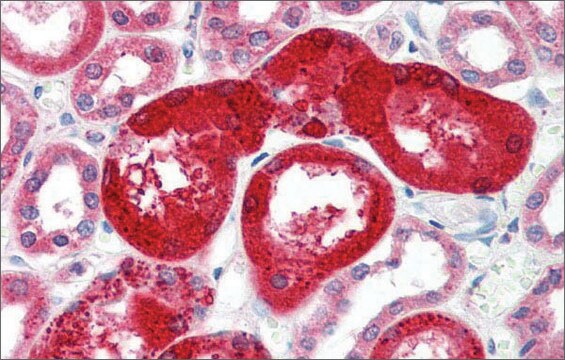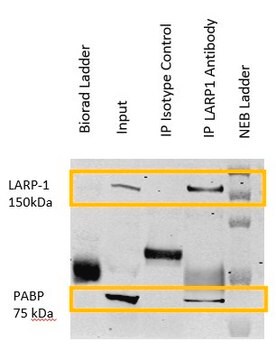MAB88916-C
Anti-Fibronectin (Cell Attachment Fragment) Antibody, clone 3E3, Ascites & Azide Free
clone 3E3, from mouse
Synonyme(s) :
Fibronectin, FN, CIG, Cold-insoluble globulin
About This Item
Produits recommandés
Source biologique
mouse
Niveau de qualité
Forme d'anticorps
purified antibody
Type de produit anticorps
primary antibodies
Clone
3E3, monoclonal
Espèces réactives
human
Technique(s)
ELISA: suitable
immunocytochemistry: suitable
immunohistochemistry: suitable
inhibition assay: suitable
western blot: suitable
Isotype
IgG1κ
Numéro d'accès NCBI
Numéro d'accès UniProt
Conditions d'expédition
wet ice
Modification post-traductionnelle de la cible
unmodified
Informations sur le gène
human ... FN1(2335)
Description générale
Immunogène
Application
Cell Structure
ECM Proteins
Immunohistochemistry Analysis: A 1:500 dilution from a representative lot detected Fibronectin (Cell Attachment Fragment) in human placenta and liver tissues.
ELISA Analysis: A representative lot detected the conformation of Fibronectin adsorbed onto self-assembled monolayers (SAMs) of alkanethiols over a range of Fibroectin surface densities (Kesolowsky, B. G., et al. (2003). J Biomed Mater Res A. 66(2):247-259.).
Immuncytochemistry Analysis: A representative lot detected Fibronectin (Cell Attachment Fragment) in Extracellular matrix deposited by HUVECs (Orecchia, A., et al. (2003). J Cell Sci. 116(Pt 17):3479-3489.).
Inhibition Analysis: A representative lot blocked cell-adhesive epitopes of Fibronectin (Cell Attachment Fragment) (Miller, D. C., et al. (2005). J Biomed Mater Res A. 73(4):476-84.).
Inhibition Analysis: A representative lot blocked RGD-dependent cell adhesion (Tsang, T. M., et al. (2012). J Biol Chem. 287(20):16759-16767.).
Inhibition Analysis: A representative lot inhibited the cell-adhesive epitopes of Fibronectin (Miller, D. C., et al. (2005). J Biomed Mater Res. 73(4):476-484.)
Qualité
Western Blotting Analysis: 0.5 µg/mL of this antibody detected Fibronectin (Cell Attachment Fragment) in 10 µg of HepG2 cell lysate.
Description de la cible
Forme physique
Stockage et stabilité
Handling Recommendations: Upon receipt and prior to removing the cap, centrifuge the vial and gently mix the solution. Aliquot into microcentrifuge tubes and store at -20°C. Avoid repeated freeze/thaw cycles, which may damage IgG and affect product performance.
Autres remarques
Clause de non-responsabilité
Vous ne trouvez pas le bon produit ?
Essayez notre Outil de sélection de produits.
Code de la classe de stockage
12 - Non Combustible Liquids
Classe de danger pour l'eau (WGK)
WGK 1
Point d'éclair (°F)
Not applicable
Point d'éclair (°C)
Not applicable
Certificats d'analyse (COA)
Recherchez un Certificats d'analyse (COA) en saisissant le numéro de lot du produit. Les numéros de lot figurent sur l'étiquette du produit après les mots "Lot" ou "Batch".
Déjà en possession de ce produit ?
Retrouvez la documentation relative aux produits que vous avez récemment achetés dans la Bibliothèque de documents.
Notre équipe de scientifiques dispose d'une expérience dans tous les secteurs de la recherche, notamment en sciences de la vie, science des matériaux, synthèse chimique, chromatographie, analyse et dans de nombreux autres domaines..
Contacter notre Service technique